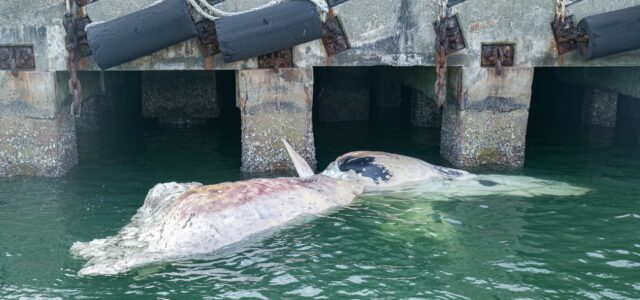Rare 6.3m whale carcass found in Singapore waters
rare-6-3m-whale-carcass-found-in-singapore-waters
#Rare #6.3m #whale #carcass #Singapore #waters,
SINGAPORE: The 6.3m-long carcass of a baleen whale was discovered in the waters off Tanjong Pagar on Sept 6, the Lee Kong Chian Natural History Museum (LKCNHM) at the National University of Singapore (NUS) announced on Tuesday (Sept 16).
The cause of death remains unknown, and the whale’s body was already in an advanced stage of decomposition when it was found. The museum’s curator of mammals, Dr Marcus Chua, said research is underway to learn more about the animal.
The incomplete specimen has been identified as a rorqual whale of the genus Balaenoptera, which includes the blue whale, the largest animal on earth. The carcass, estimated to weigh about six tonnes, was missing half its body. Based on what remains, scientists believe the whale would have measured between 9m and 12m in length when alive.
The discovery was first flagged by officers from the National Parks Board, who alerted LKCNHM researchers. While preparations were being made to recover the remains, the carcass drifted towards Marina Bay Cruise Centre on Sept 12. To prevent it from being swept out to sea, museum staff worked with Singapore Salvage Engineers to secure it.
The whale is now being processed and studied in a restricted area by a team led by Dr Chua.
Dr Chua noted that whale encounters in Singapore waters are rare and that each stranding provides unique study opportunities.
Dr Chua also clarified that there is no danger of the carcass exploding due to a build-up of gases, as its abdominal cavity was already open when discovered. However, the smell has been a challenge for researchers.
“Several team members have varyingly described it as decaying dried fish or dried squid, even durian,” he told The Straits Times, “For me, it’s ammonia with decaying flesh and musty leather seats, topped with a sharp acrid odour when the wind blows.”
The age and sex of the whale have yet to be determined. Tissue samples have been collected for genetic analysis, and the museum intends to share updates on the dissection process and findings with the public when ready.
Baleen whales, which feed by filtering zooplankton and small prey with comb-like plates in their jaws, range in size from the 6.5m pygmy whale to the 30m blue whale. While rare in Singapore waters, baleen whale carcasses have been reported off Pulau Bukom in 1980 and near Pedra Branca in 2009.
The discovery comes exactly a decade after the museum’s most significant whale find: the carcass of a sperm whale, later named Jubi Lee, which washed up near Jurong Island in 2015. That 10.6m female specimen, the first recorded sperm whale in Singapore, is now on display at the museum.
Darren Yeo, head of LKCNHM, called the latest find “moving and serendipitous”, noting that it coincides with the museum’s 10th anniversary.
“It is both moving and serendipitous that another whale carcass should arrive in our waters during our 10th anniversary year – exactly 10 years after the museum’s launch and the discovery of Jubi Lee – just as we have been reflecting on a decade of research, public engagement, and conservation,” he said.
Singapore’s history with whale finds goes back even further. A 13.4 m blue whale stranded near Melaka in 1892 was displayed for decades in the Raffles Museum in Stamford Road. The skeleton, then known as the Singapore Whale, was transferred to Malaysia in 1974. Today, it remains on display at the Labuan Marine Museum.
